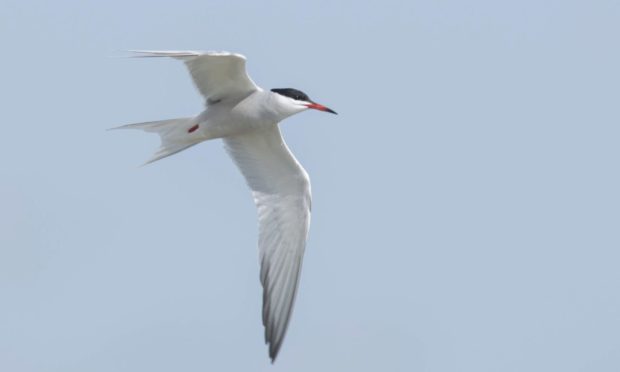The overseer of a Highland bird reserve is keen to progress ambitious plans to further develop what has become a haven for myriad species.
Julian Smith has spent more than 30 years painstakingly turning St John’s Pool near his home in Brough in north Caithness into a popular haunt for birdwatchers.
He is seeking funding for the £80,000 project which would add to its attraction for schoolchildren and disabled people as well as research how to improve the success of breeding pairs.
The site, nestled between Dunnet Bay and the Pentland Firth, provides four hides for twitchers to view the feathered visitors.
Mr Smith painstakingly logs all sightings, with his records detailing more than 200 species since 1989.
Last year proved a boom season, with best ever counts for sandwich and common terns and record autumn scores for wigeon, gadwall, and whooper and mute swans.
St John’s now boasts the second largest sandwich tern colony in Scotland
The plans involve upgrading the access from the car park to the hide to allow easy access for wheelchair users and other disabled individuals.
A solar-powered water management system would also be installed along with rat-proof nesting facilities for terns in a bid to address the high annual loss of eggs and chicks.
Remote cameras would also be set within the tern colonies to monitor the nests of breeding pairs and identify the feed sources of chicks.
The reserve, which occupies a hectare, has no official designation though Mr Smith recognises the support it has received from organisations like NatureScot.
‘Very satisfying seeing it turn into a significant reserve’
He said: “When we moved here, St John’s was little more than a puddle and it’s been very satisfying seeing it turn into a significant reserve.
“In Ordnance Survey maps, it is marked as a nature reserve though it does not have any official status and I’ve not put that designation on it.
“It’s something I designed and have managed over the past 30-odd years and call a bird reserve.”
Mr Smith is seeking to tap into funding from the Stroupster wind farm community benefit fund and the Scottish Landfill Community Fund,
If successful, he believes the work could take until the end of this year to complete though he stresses it would not interfere with the breeding season.
The reserve is open to the public in summer but this was not possible last year because of the pandemic.
Mr Smith expects to be subject to the same constraints this year but plans to have an advance booking system in place for visitors.
He is meanwhile is encouraging people to email him at smith57ja@gmail.com in support of the development to further the chances of the applications succeeding.
